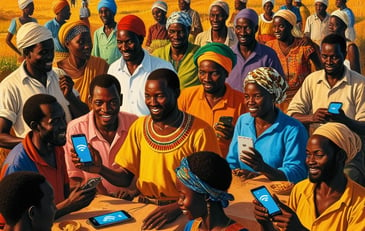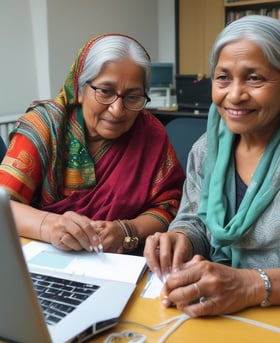“Just because digital technology makes connecting possible, doesn’t mean you’re actually reaching people.”
Despite the potential of digital technologies to promote access and empowerment, 2.6 billion people remain offline — mostly women, older adults, and rural populations.
Among populations (including in high-connectivity countries), low-income communities face structural digital exclusion.
For early users, barriers such as safe access and usage; and challenges of mis and dis-information on the internet remain.


Key Barriers to Inclusion:
Digital literacy gaps: Most tools assume a base level of literacy and confidence with interfaces.
Safety and trust issues: Excluded groups are more vulnerable to scams, misinformation, and surveillance.
Lack of community-integrated training: Top-down digital literacy programs lack cultural relevance or follow-through.




Digital inclusion requires system thinking to create ecosystems that enable positive, sustainable change.
We work at the intersection of inclusion, human centered design, and market transformation, using these principles to map digital solutions to human need. While we love tech, we lead with people.
We are building capabilites of people to safely access, use and adopt digital tools and systems.
Our RCTF Approach:
Research: We map the landscape of sectoral promises, failures, and systemic barriers. There are decades of development and market trends and research. How can we intelligently integrate what has worked and not worked to address the gaps of the present and future?
Curate: We identify the most effective practices across all sectors – including those that are not usually applied to social change. This is the value of our deep and varied team. We then adapt for highest-impact, lowest cost scale.
Test & Prototype: We listen. We learn. We do not just “co-design” in one focus group. We build trusted relationships and respond to real user needs. Respect builds respect and leads to even better solutions.
Facilitate: We are connected from the grassroots to ministries. We want everyone to benefit from our work and findings – so you’ll find us active in communities of practice, championing collaboration.




